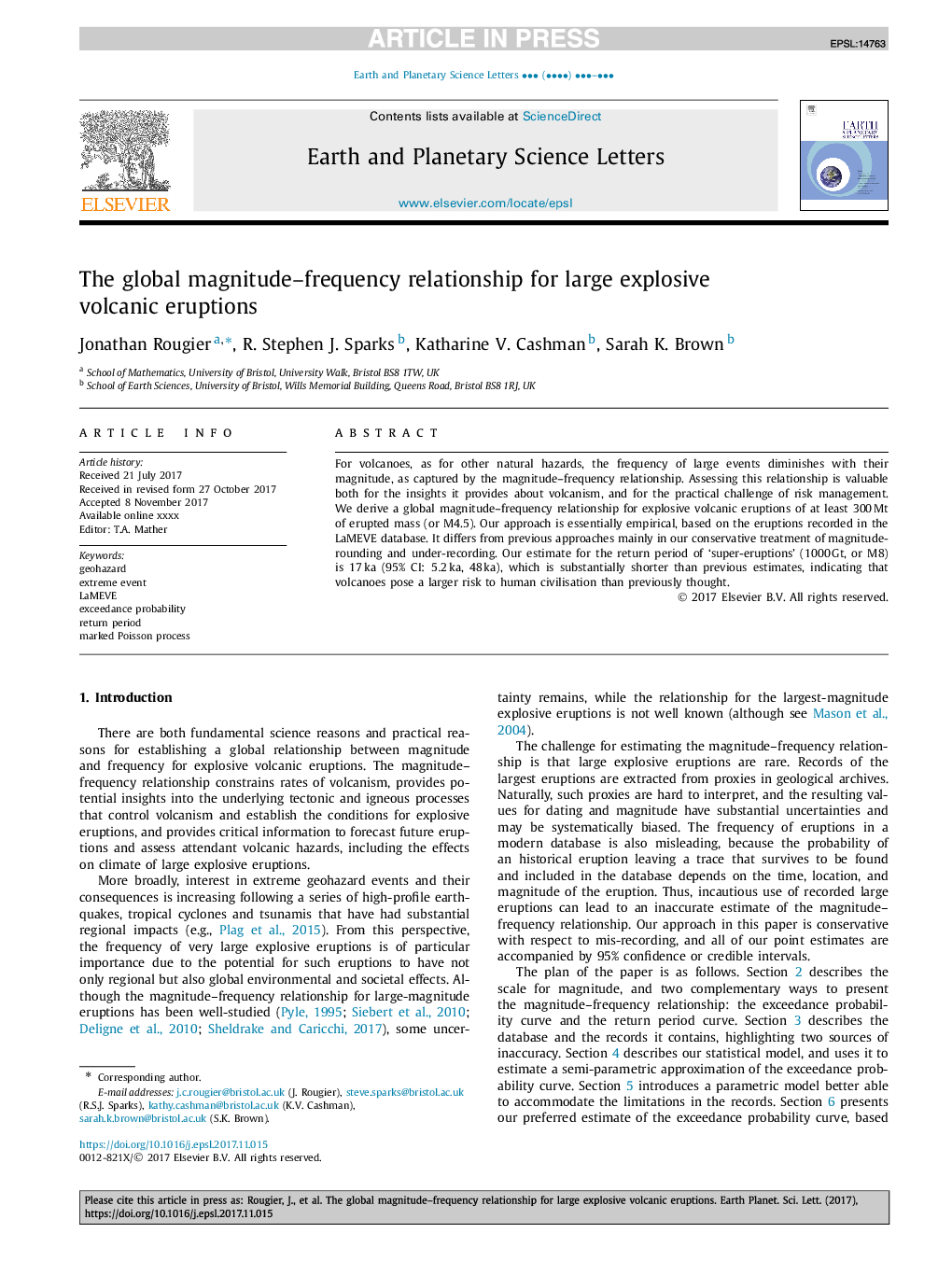| Article ID | Journal | Published Year | Pages | File Type |
|---|---|---|---|---|
| 8907313 | Earth and Planetary Science Letters | 2018 | 9 Pages |
Abstract
For volcanoes, as for other natural hazards, the frequency of large events diminishes with their magnitude, as captured by the magnitude-frequency relationship. Assessing this relationship is valuable both for the insights it provides about volcanism, and for the practical challenge of risk management. We derive a global magnitude-frequency relationship for explosive volcanic eruptions of at least 300Mt of erupted mass (or M4.5). Our approach is essentially empirical, based on the eruptions recorded in the LaMEVE database. It differs from previous approaches mainly in our conservative treatment of magnitude-rounding and under-recording. Our estimate for the return period of 'super-eruptions' (1000Gt, or M8) is 17ka (95% CI: 5.2ka, 48ka), which is substantially shorter than previous estimates, indicating that volcanoes pose a larger risk to human civilisation than previously thought.
Related Topics
Physical Sciences and Engineering
Earth and Planetary Sciences
Earth and Planetary Sciences (General)
Authors
Jonathan Rougier, R. Stephen J. Sparks, Katharine V. Cashman, Sarah K. Brown,
